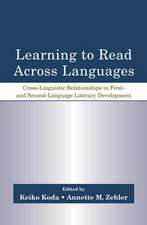Worldwide Trends in Green Chemistry Education
Editat de Vania Zuin, Liliana Mamminoen Limba Engleză Hardback – 22 iun 2015
Educating the next generation of chemists about green chemistry issues, such as waste minimisation and clean synthesis, is vital for environmental sustainability. This book enables green issues to be taught from the underlying principles of all chemistry courses rather than in isolation.
Chapters contributed by green chemistry experts from across the globe, with experience in teaching at different academic levels, provide a coherent overview of possible approaches to incorporate green chemistry into existing curriculums. Split into three sections, the book first introduces sustainability and green chemistry education, before focussing on high school green chemistry education initiatives and green chemistry education at undergraduate and post-graduate levels. Useful laboratory experiments and in-class activities to aid teaching are included.
This book is a valuable resource for chemical educators worldwide who wish to integrate green chemistry into chemical education in a systematic and holistic way. It is also of interest to anyone wanting to learn more about the different approaches adopted around the world in sustainability education.
Preț: 383.43 lei
Nou
73.38€ • 76.51$ • 60.98£
Carte disponibilă
Livrare economică 28 februarie-14 martie
Specificații
ISBN-10: 1849739498
Pagini: 345
Dimensiuni: 160 x 239 x 28 mm
Greutate: 0.64 kg
Editura: Royal Society Of Chemistry
Notă biografică
Textul de pe ultima copertă
Educating the next generation of chemists about green chemistry issues, such as waste minimisation and clean synthesis, is vital for environmental sustainability. This book enables green issues to be taught from the underlying principles of all chemistry courses rather than in isolation.
Chapters contributed by green chemistry experts from across the globe, with experience in teaching at different academic levels, provide a coherent overview of possible approaches to incorporate green chemistry into existing curriculums. Importantly, green chemistry is placed in the context of broader sustainability developments and useful laboratory experiments and in-class activities to aid teaching are included. Furthermore, the connections between the general objectives of green chemistry education and the design of pedagogical options are highlighted throughout enabling readers to design personalised options most apt for their own context.
The contents are split into three sections. The first introduces sustainability and green chemistry education, explores the meaning of sustainable development and provides an overview of different models to integrate sustainability with chemistry education. The second and third parts focus on high school green chemistry education initiatives and green chemistry education at undergraduate and post-graduate levels.
This book is a valuable resource for chemical educators worldwide who wish to integrate green chemistry into chemical education in a systematic and holistic way. It is also of interest to anyone wanting to learn more about the different approaches adopted around the world in sustainability education.








